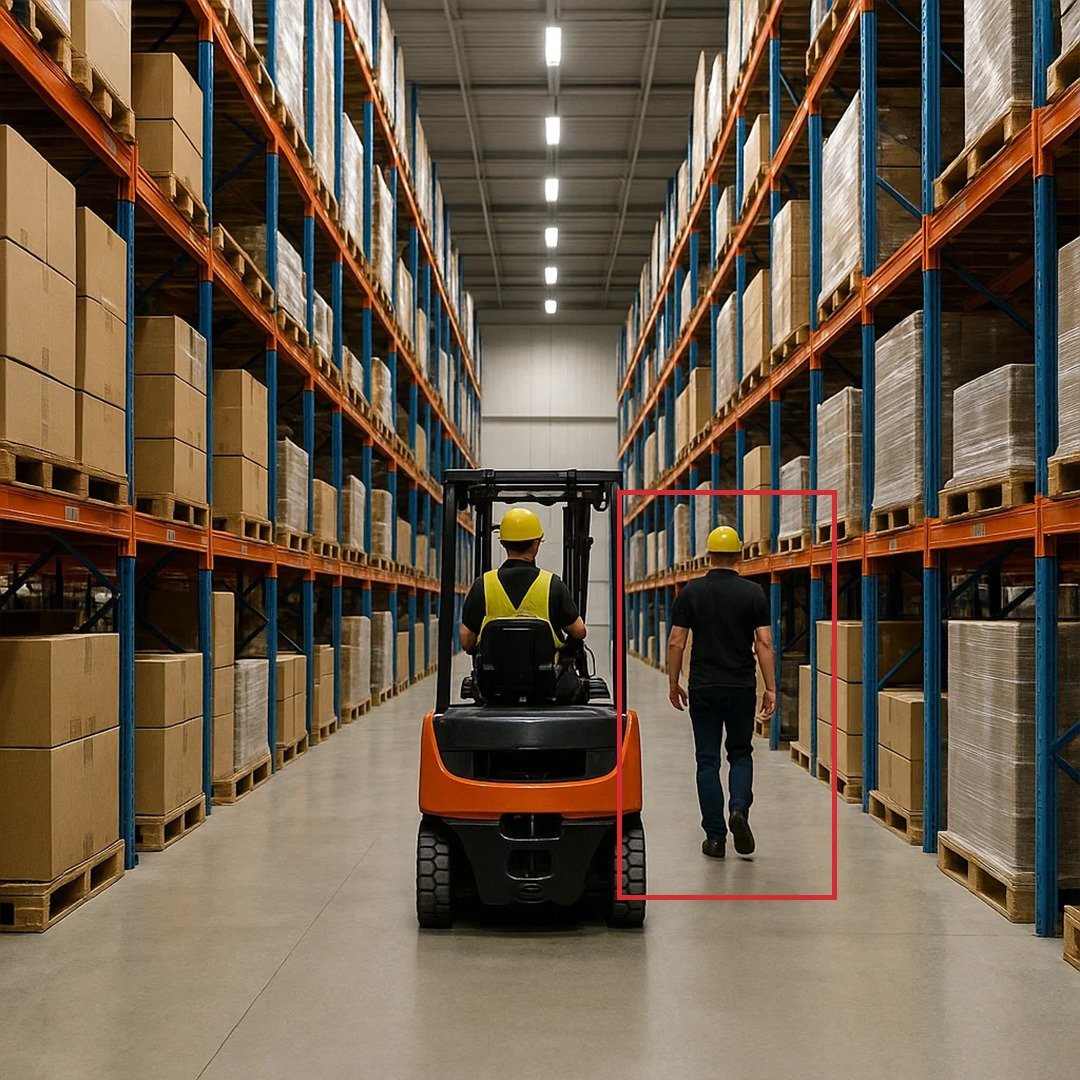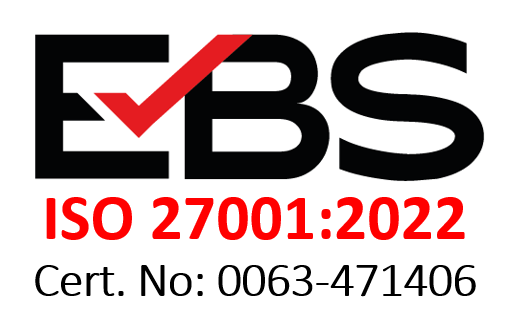The Ultimate Guide to EHS: What It Means and Why It Matters
Introduction
In today’s complex, fast-paced work environments, ensuring safety, health, and environmental responsibility is no longer just a legal obligation; it’s a strategic necessity. The way we manage safety has changed dramatically over the years. We used to rely on manual inspections and reactive incident reporting, but now it has evolved into smarter EHS management.
Businesses now face a growing need to monitor and prevent incidents in real-time, and that’s where AI Computer Vision comes in.
Now, AI-powered CCTVs can detect hazards instantly and flag unsafe behaviour or equipment malfunctions before they escalate. Live dashboards can pull safety data from every corner of your operation, highlighting potential risks, compliance gaps, or unsafe trends at a glance.
At The Disrupt Labs, we use AI-driven computer vision to replace outdated manual methods like manual safety inspections, handwritten inspection logs, and delayed reporting. Our AI Computer Vision solutions monitor safety conditions continuously, identify risks automatically, and deliver instant alerts, therefore empowering EHS teams to act faster and with far greater precision.
Safety has become not just easier, but smarter and more effective.
What does EHS stand for?
EHS stands for Environment, Health, and Safety. It’s a comprehensive management strategy that organizations use to protect the well-being of their employees, preserve the natural environment, and maintain safe and compliant operations. EHS requires continuous real-time monitoring of activities, equipment, and personnel to sustain industrial safety.
The three pillars of EHS are:
- Environmental: Minimizing emissions, reducing waste, and saving resources.
- Health: Encouraging worker health and reducing exposure to health risks.
- Safety: Avoiding workplace accidents and implementing hazard control practices.
Traditional EHS programs often relied on manual checklists, manual audits, and reactive measures. Today, with the help of AI-powered Computer Vision, EHS has become smarter and faster. At The Disrupt Labs, we develop powerful AI-based Industrial Safety solutions that use computer vision, real-time alerts, and automated monitoring to help businesses detect hazards instantly, ensure compliance effortlessly, and intervene before an incident occurs.
EHS vs. SHE vs. HSE: Understanding the Differences
EHS, SHE, and HSE are multiple acronyms that safety and compliance managers need to be familiar with. Now, what really sets them apart? They may all represent similar concepts, but they differ in regional usage.
In terms of similarity, they all represent the same concepts, just in a different order. Why the different order, however? The answer often comes down to regional preferences or the agencies that oversee compliance practices across these regions.
- EHS stands for Environmental, Health, and Safety. It is most commonly used in North America, particularly in the United States, and the Occupational Safety and Health Administration (OSHA) oversees and develops compliance standards for EHS.
- SHE stands for Safety, Health, and Environment and is mainly used across the United Kingdom. In the UK, the Health and Safety Executive (HSE) oversees compliance with health and safety practices.
- HSE stands for Health, Safety, and Environment. HSE is commonly used across Europe.
Whether your organization refers to its risk management as EHS, SHE, or HSE, the goals remain the same.
Why is EHS Important?
In every workplace, the health and safety of employees and the environment matter. Therefore, EHS is not just a legal obligation but also a comprehensive strategy for ethical responsibility, operational success, and long-term sustainability.
The cost of poor EHS management extends far beyond fines and legal consequences. It disrupts operations, lowers employee morale, and erodes public trust. It can lead to lawsuits, increased insurance claims, high turnover, and even reputational damage.
Strong EHS management transforms the workplace. It shifts the focus from reacting to incidents to preventing them from happening in the first place. It develops a culture where each employee feels safer.
In the digital era, this transformation has been made easier, smarter, and faster. AI-powered solutions enable businesses to stop relying on traditional EHS solutions such as slow, error-prone manual checks. Safety teams no longer have to wait for paper-based reports or walk every inch of a site to spot hazards.
Now, with smart visual alerts and live dashboards, teams can detect risks instantly as they occur. AI makes proactive safety management more accessible, even for companies with large, complex operations. Instant alerts, real-time data, and safety insights allow safety teams to take immediate action, therefore reducing the chance of incidents and compliance gaps.
At The Disrupt Labs, we use AI computer vision, automated monitoring, and real-time alert systems to help businesses eliminate delays in inspections and dramatically reduce the risk of human error. Our smart dashboards offer complete operational visibility, allowing EHS managers to identify and respond to unsafe behaviour before it can cause harm.
Discover how AI-powered safety solutions are helping businesses stay ahead in EHS compliance.
Which Businesses Need to Consider EHS?
No matter the size or sector, any business that involves people, equipment, or potential hazards must prioritize EHS. While it’s often linked to high-risk industries, EHS is relevant almost wherever people work. A strong EHS strategy is essential, not only for safety and compliance but also for operational excellence.
Protecting the environment and employees must be a priority for every business. However, some businesses have to manage risk more strictly than others. Industries such as oil and gas, petrochemical, manufacturing, construction, logistics, and healthcare face some of the highest safety and environmental risks, making strong EHS compliance critical to their operations.
Traditionally, companies have relied on manual inspections, paper-based audits, and reactive approaches to managing health and safety. While this may have sufficed in the past, it often led to overlooked hazards, delayed responses, and inconsistent compliance.
AI-powered Computer Vision industrial safety solutions are transforming how businesses approach EHS compliance, helping them move from reactive to proactive safety strategies. Instead of waiting for something to go wrong, companies can now detect risks in real time, receive automated alerts, and access data-driven insights to guide smarter decisions. AI makes it easier to stay ahead of potential issues, without increasing the burden on EHS teams.


Key Benefits of Using AI in EHS Compliance
What if your workplace could spot a safety risk before anyone even noticed it? That’s the power of integrating artificial intelligence into EHS compliance. We, at The Disrupt Labs, are redefining workplace safety with AI-powered EHS solutions that bring speed, precision, and real-time insight to safety teams.
Here are the key benefits of using AI in EHS compliance:
- Proactive Hazard Detection
AI-powered Computer Vision continuously monitors workplaces using CCTVs to collect visual data. They can detect issues like Personal Protective Equipment violations, unsafe movements, lack of forklift safety, or blocked exits before they lead to harm, giving your team the chance to correct risks before they escalate.
- Real-time Alerts and Responses
With instant notifications sent directly to safety managers or supervisors, hazards can be addressed immediately.
The Disrupt Labs AI Computer Vision Solutions sends automated safety alerts via live dashboards, WhatsApp and email, notifying safety personnel the moment a hazard is detected. This rapid response helps prevent minor oversights from becoming major incidents and improves overall workplace safety.
- Reduced Workplace Injuries
By catching risks early through AI-powered CCTV surveillance and ensuring faster response to safety alerts, AI significantly lowers the chances of accidents and injuries.
- Standardized Compliance Across Multiple Sites
AI ensures consistent safety standards and reporting across all locations. Whether you’re managing one site or dozens, AI helps maintain uniform compliance, reducing variation and regulatory risk.
- Reduced Administrative Load
Digital inspections and real-time dashboards take the pressure off EHS teams. Instead of spending hours compiling reports, they can focus on strategic planning, training, and improving safety culture.
What Does an EHS Manager Do?
The EHS Manager plays a vital role in keeping workplaces safe, healthy, and compliant with environmental and safety regulations. However, their responsibilities go far beyond simply enforcing rules.
An EHS manager is responsible for overseeing a wide range of critical functions, including managing workplace health and safety systems, coordinating and conducting safety training programs, analyzing job-related hazards, implementing effective hazard controls, and carrying out comprehensive risk management activities.
Their contribution is essential to keeping operations running smoothly while protecting both people and the environment.
That’s where our AI-based safety solution steps in as a powerful ally. By automating inspections, reducing paperwork, and delivering real-time visibility across multiple worksites, we free EHS managers from time-consuming manual tasks. Instead of sorting through reports or chasing down compliance data, they can access everything instantly through smart dashboards, making it easier to monitor trends, respond to incidents, and make faster, more informed safety decisions.
AI ultimately empowers EHS managers to work smarter, act faster, and lead safer, more resilient organizations.
Conclusion
EHS represents a business’s commitment to safeguarding its people, operations, and the environment. As workplace risks grow more complex, the need for smarter, faster, and more reliable EHS solutions has never been greater.
The Disrupt Labs leverages AI to transform EHS from a reactive checklist into a proactive, real-time system. With features like computer vision monitoring, live dashboards, and predictive risk alerts, we help companies reduce incidents, stay compliant, and make data-driven safety decisions with confidence.
EHS isn’t just a department, it’s a mindset. And in today’s world, embracing intelligent EHS technology is no longer optional; it’s essential for building safer, stronger, and more resilient.
Ready to take your safety strategy to the next level? Connect with us today.
Frequently Asked Questions
EHS stands for Environment, Health, and Safety. It refers to a framework used by organizations to ensure safe working conditions, protect employee health, and minimize environmental impact.
AI is revolutionizing EHS by enabling real-time hazard detection, predictive risk analysis, and automated compliance tracking.
AI is making EHS more effective by automating inspections, identifying hazards in real time, sending instant alerts and automating compliance tasks before incidents occur.
The Disrupt Labs uses AI computer vision to automate safety monitoring, reduce human error, and deliver real-time alerts through email, WhatsApp, and live dashboards, helping EHS teams respond faster and more effectively.

